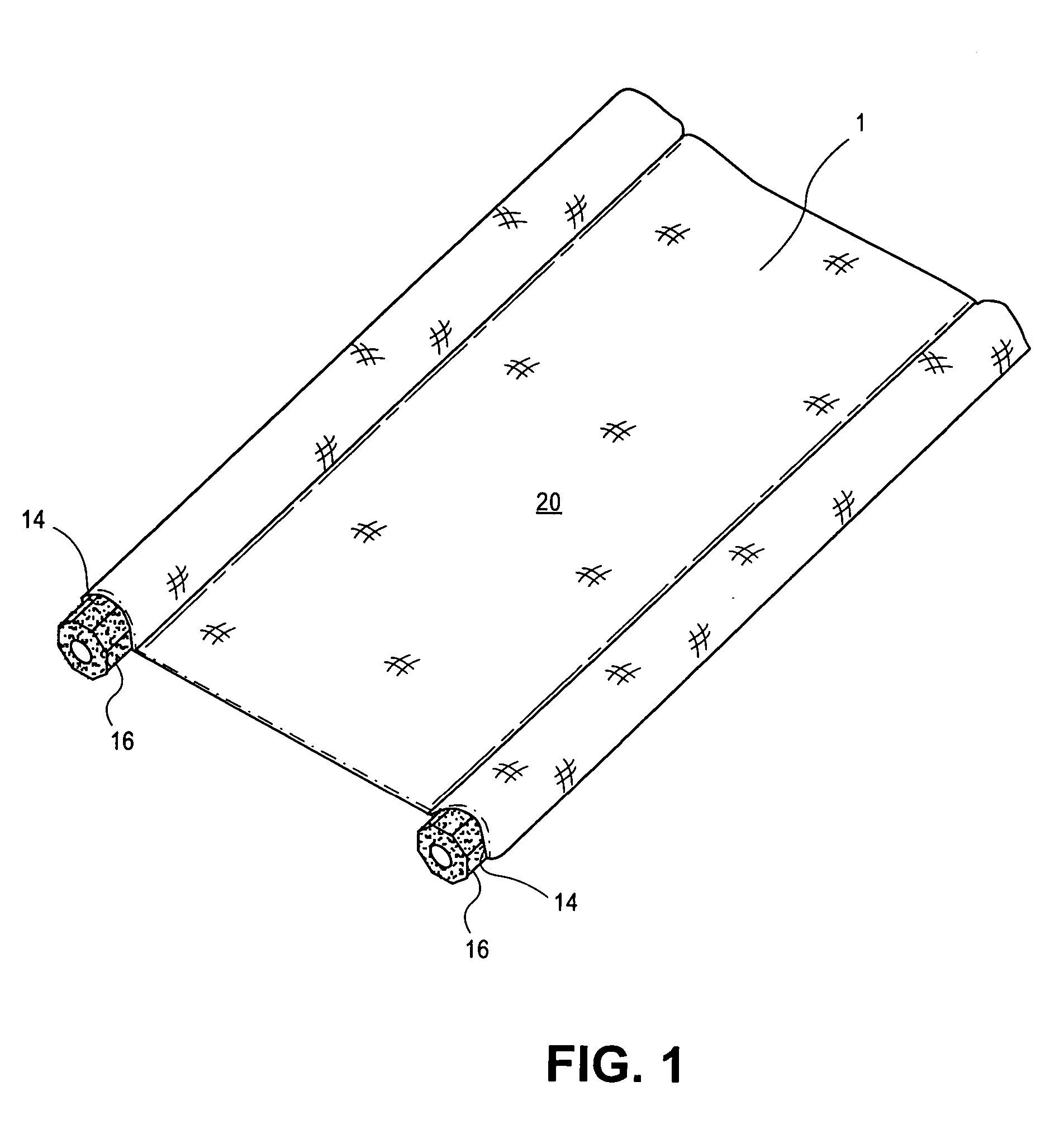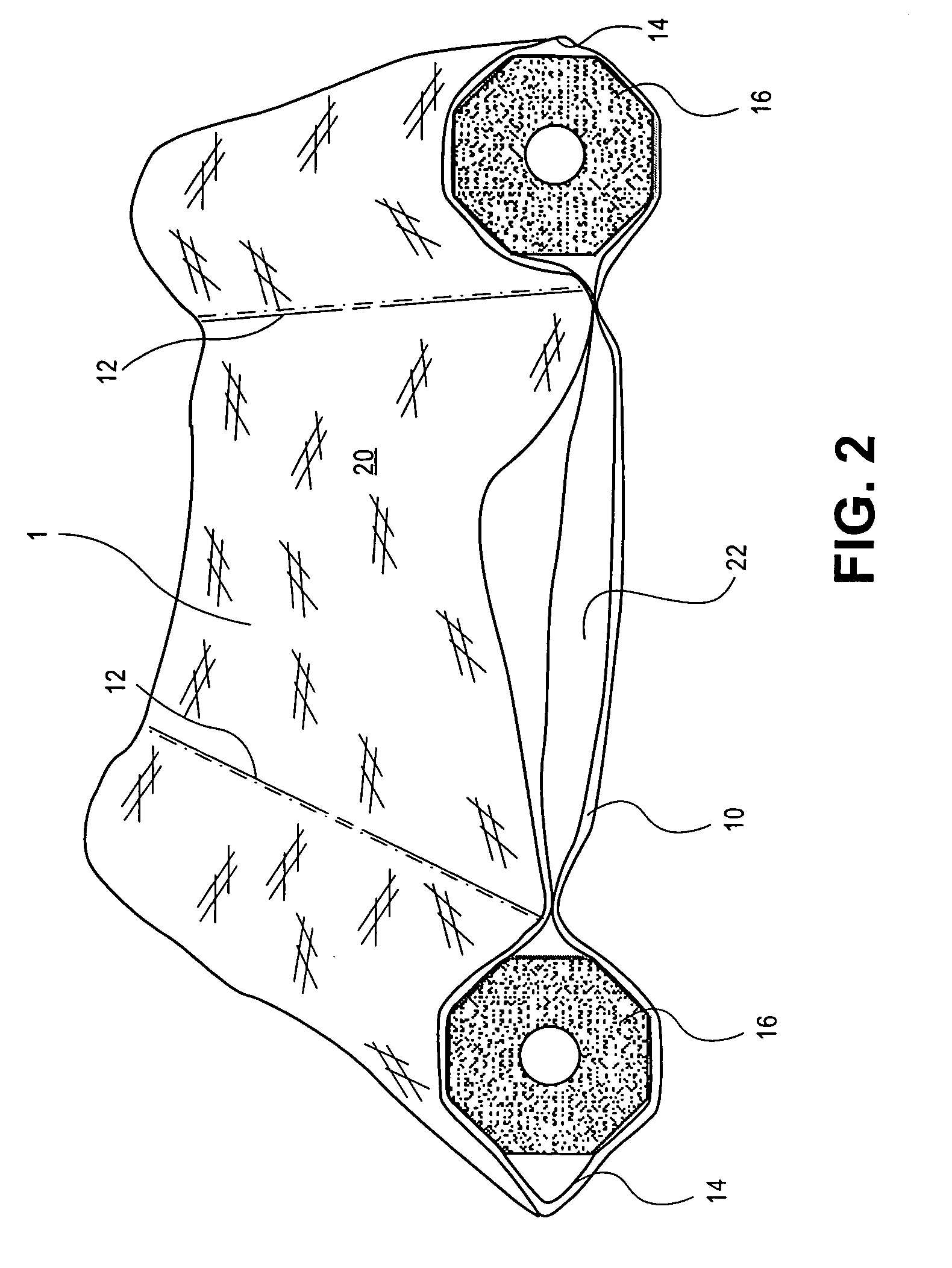Infant co-sleeper method of breastfeeding
a technology for breastfeeding and infants, applied in the field of infant cosleepers, can solve the problems of no product on the market and just not comfortable, and achieve the effect of prolonging the length of time that mothers breastfeed their infants, without sacrificing sleep
- Summary
- Abstract
- Description
- Claims
- Application Information
AI Technical Summary
Benefits of technology
Problems solved by technology
Method used
Image
Examples
Embodiment Construction
[0017]Referring to FIG. 1 and 2, the construction of the co-sleeper can be easily understood. Quilted pad 1 is shown formed into an endless two-sided pad 10. Endless two-sided pad 10 is provided with paired seems 12 which define pad receiving pockets 14. Into those respective pad receiving pockets 14 there are placed paddings 16, here in the form of so-called “swimming pool noodles.” It will be seen in FIG. 2, that central rectilinear portion 20 formed by quilted pad 1 forms a pocket 22 which can receive backing or absorbent padding [not shown].
[0018]Referring to FIG. 3, use of the infant co-sleeper is easily understood. Simply stated, one padding 16 is withdrawn partially from a pocket 14 to vacate pocket 14 in the vicinity of the infant's head. The infant can then be addressed to the breast of the nursing mother while a portion of padding 16 maintains the capture of the infant on the co-sleeper.
[0019]It will be understood that this invention will admit of a wide variety variation....
PUM
 Login to View More
Login to View More Abstract
Description
Claims
Application Information
 Login to View More
Login to View More - R&D
- Intellectual Property
- Life Sciences
- Materials
- Tech Scout
- Unparalleled Data Quality
- Higher Quality Content
- 60% Fewer Hallucinations
Browse by: Latest US Patents, China's latest patents, Technical Efficacy Thesaurus, Application Domain, Technology Topic, Popular Technical Reports.
© 2025 PatSnap. All rights reserved.Legal|Privacy policy|Modern Slavery Act Transparency Statement|Sitemap|About US| Contact US: help@patsnap.com



